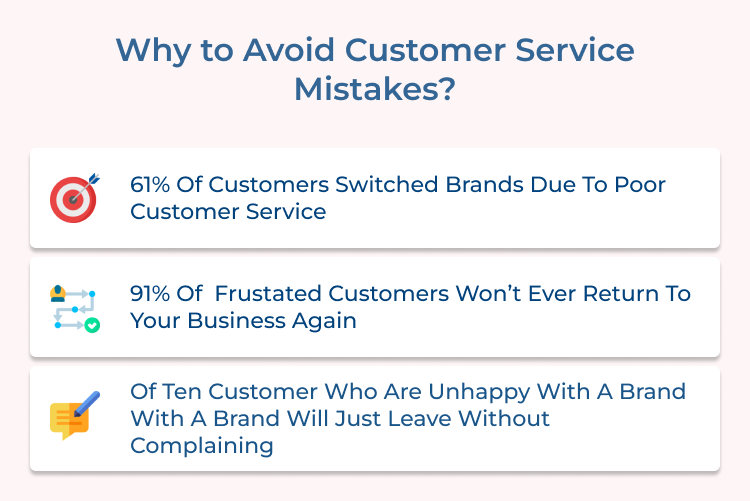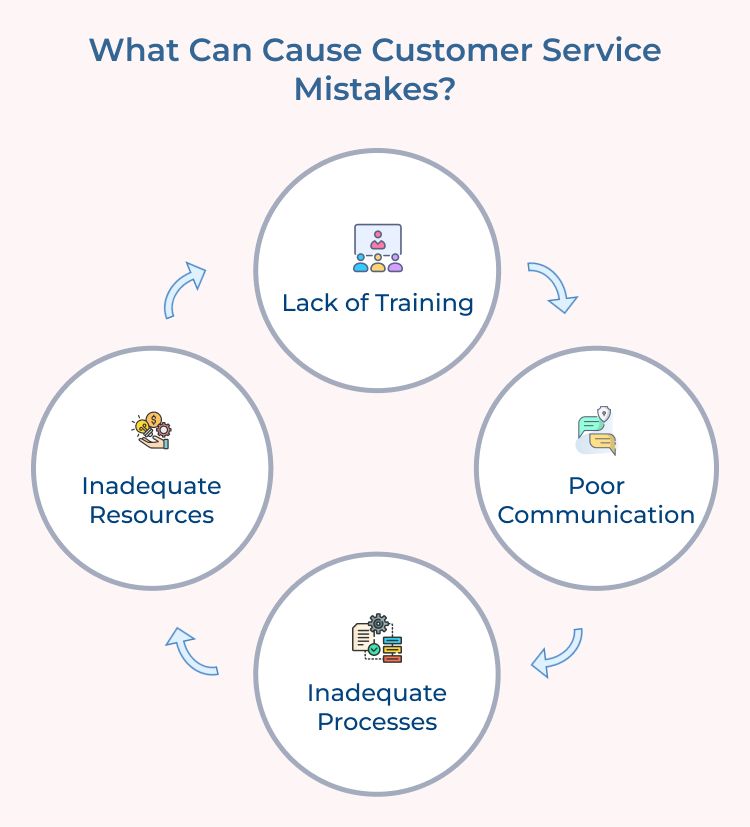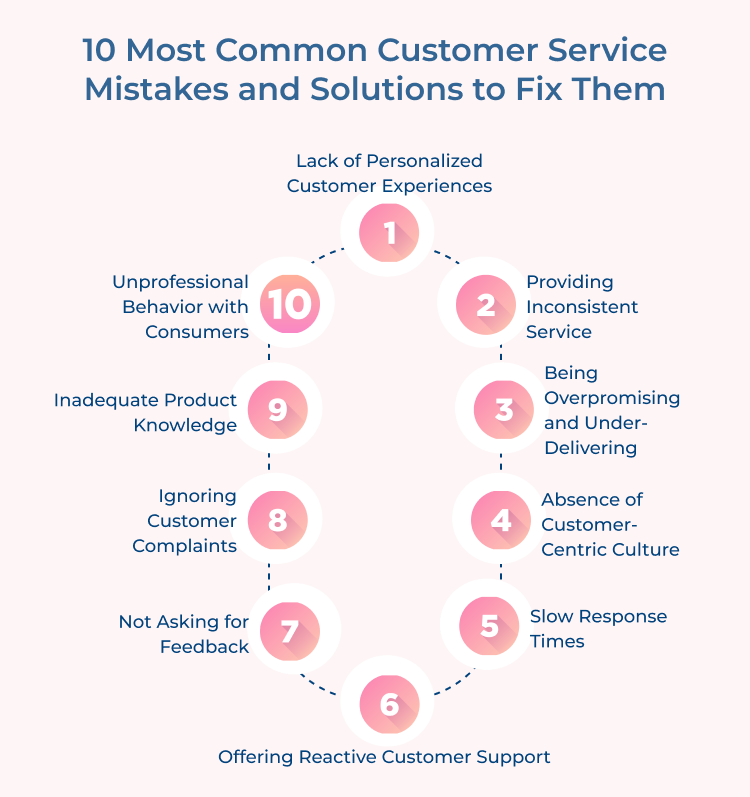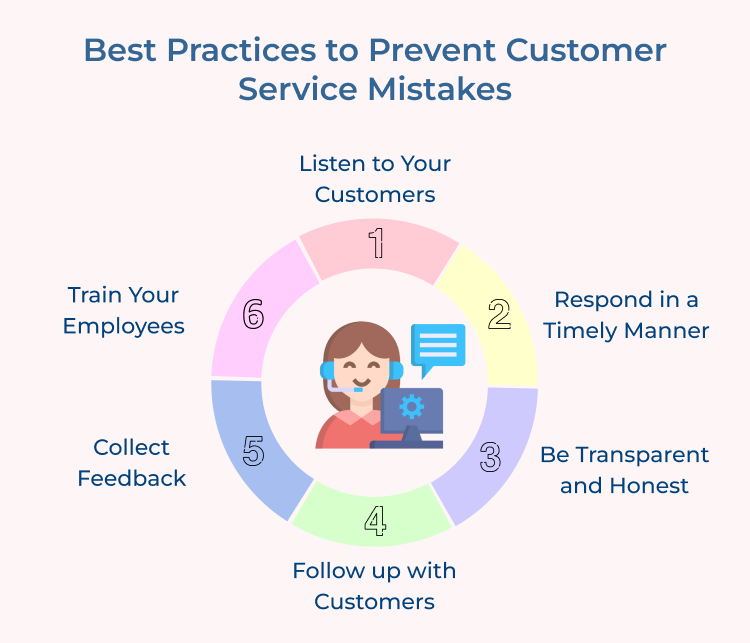1. Lack of Personalized Customer Experiences
Customers appreciate when a business puts effort to personalize their interactions. Tailoring communication and offerings to fit the individual needs of customers can go a long way in making them feel valued.
Solutions:
- Deploy CRM software to keep track of customer needs, purchase history etc. and personalize interactions.
- Implement personalized marketing strategies to cater to individual needs.
- Utilize customer data to tailor interactions and offers to individual preferences.
- Train your staff to actively listen to customers and anticipate their needs.
2. Providing Inconsistent Service
Inconsistency in customer service can lead to confusion and dissatisfaction among customers. Customers expect the same level of service every time they interact with a business.
Solutions:
- Evaluate service levels regularly to identify and address any inconsistencies.
- Establish clear customer service protocols and standards for all employees to follow.
- Conduct regular training sessions to ensure that all staff members are consistently delivering high-quality service across all touch points.
- Implement customer feedback surveys to identify any areas of inconsistency and address them promptly.
3. Being Overpromising and Under-Delivering
Making promises to customers that cannot be fulfilled can damage trust and credibility. It is important to set realistic expectations and deliver on them consistently.
Solutions:
- Set clear and realistic expectations with customers from the outset.
- Communicate honestly about any potential delays or issues proactively to manage customer expectations.
- Focus on delivering exceptional service and value consistently to exceed customer expectations.
4. Absence of Customer-Centric Culture
A customer-centric culture puts the customer at the center of business operations. Failing to prioritize the needs of customers can result in poor service and lose good business opportunities.
Solutions:
- Encourage collecting feedback from customers to continuously improve the customer experience.
- Foster a customer-centric mindset among all employees by prioritizing customer needs and satisfaction.
- Encourage regular communication and collaboration with customers to better understand their pain points.
- Reward and recognize employees who go above & beyond to provide exceptional service to customers.
5. Slow Response Times
Customers value quick and efficient service. Delayed responses to inquiries or complaints can lead to frustration and dissatisfaction.
Solutions:
- Implement live chat software to deliver prompt responses to customer queries.
- Deploy AI chatbot to deliver 24*7 support to customer FAQs.
- Set clear guidelines for response times to customer inquiries and issues.
- Implement a ticketing system or customer service software to track and prioritize customer requests efficiently.
- Provide training and resources to help employees respond promptly to customer inquiries.
6. Offering Reactive Customer Support
Reactive customer service involves addressing issues only when they arise or the customer approaches you, rather than being proactive in anticipating and addressing them.
Solutions:
- Anticipate potential customer issues and proactively address them before they escalate.
- Offer self-service options or online resources to empower customers to find solutions independently.
- Monitor social media as well as online reviews to address any customer concerns promptly and proactively.
7. Not Asking for Feedback
Feedback from customers is essential for improving service and product offerings. Failing to seek feedback proactively means missed opportunities for growth and improvement. Practice asking for feedback across different channels and touchpoints of customer journey.
Solutions:
- Conduct regular customer feedback surveys or follow-up calls to gather insights and suggestions for improvement.
- Analyze customer feedback to identify trends or common pain points and make strategic improvements.
- Communicate with customers openly and transparently about how their feedback is being used to enhance the customer experience.
8. Ignoring Customer Complaints
Businesses should be customer obsessed – valuing their complaints and opinions. Ignoring customer concerns can result in lost business opportunities and damaged relationships. Every customer interaction is an opportunity to address and resolve issues.
Solutions:
- Train employees to actively listen to customer complaints and acknowledge their concerns in real time.
- Implement a structured process across departments for resolving customer complaints promptly and effectively.
- Follow up with customers after resolving complaints to ensure their satisfaction with the resolution process.
- Use complaints as learning opportunities to improve processes and prevent similar issues in the future.
9. Inadequate Product Knowledge
Customers expect customer service representatives to have a thorough understanding of products and services. Not able to provide accurate and detailed information can lead to frustration.
Solutions:
- Provide comprehensive product training sessions to employees on all the important products and services.
- Create resources and implement tools to help employees access product information quickly to deliver relevant information.
- Encourage ongoing learning and development to keep employees up-to-date on new products and industry trends.
10. Unprofessional Behavior with Consumers
Unprofessional conduct by customer service representatives can tarnish the reputation of a business and drive customers away. Maintaining a courteous and respectful attitude is essential for building trust.
Solutions:
- Establish a code of conduct and customer service standards to guide employee behavior.
- Provide customer service training on effective communication and conflict resolution to ensure professionalism at all times.
- Offer regular feedback and coaching to address any instances of rude or unprofessional behavior promptly.
- Address any behavior issues promptly and provide ongoing support to promote positive interactions.
Best Practices to Prevent Customer Service Mistakes
Mistakes in customer service can lead to unhappy customers, negative reviews and loss of business. To prevent customer service mistakes, it is important for businesses to follow best practices that prioritize customer satisfaction and loyalty.








